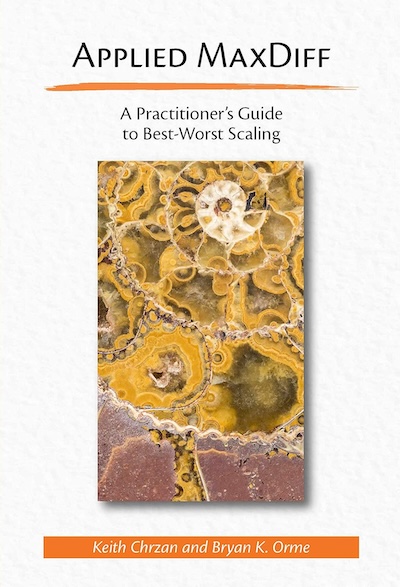
A relatively new class of stated choice experiment, MaxDiff (Best-Worst Scaling) has seen a meteoric rise in popularity. In its ease of use and in the wide range of problems it helps solve, MaxDiff is something of a Swiss army knife among research methods. In Applied MaxDiff Keith Chrzan and Bryan K. Orme introduce MaxDiff with clear examples that walk the reader step-by-step through the process of designing, analyzing and reporting a MaxDiff study.
This volume extends the kind of treatment the authors gave conjoint analysis in Becoming an Expert in Conjoint Analysis (Orme and Chrzan 2017). As a result, Applied MaxDiff provides practical guidance based on the authors' experience and on sound statistical theory. Applied MaxDiff draws on a wealth of academic and practitioner research on MaxDiff and usefully summarizes it for readers. Favoring intuitive explanations over complicated equations, the authors want Applied MaxDiff to be a readable source of information on MaxDiff, one that can help beginners get confident enough to start using MaxDiff while offering more experienced researchers ways to get more from their MaxDiff studies.

